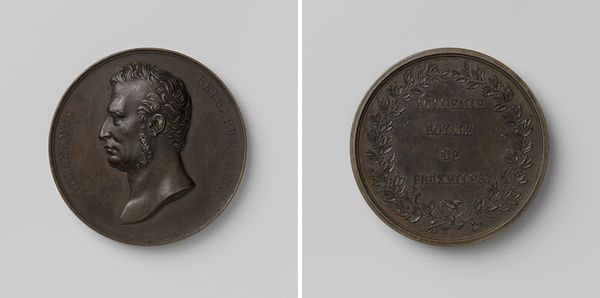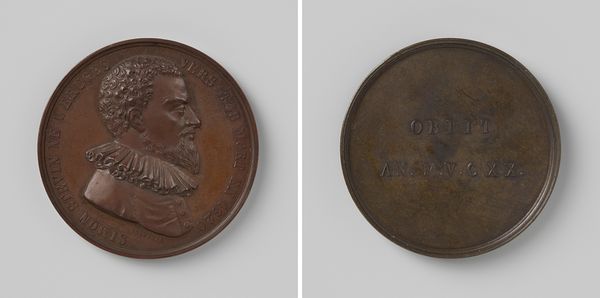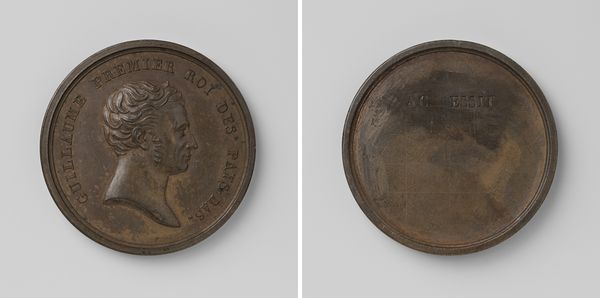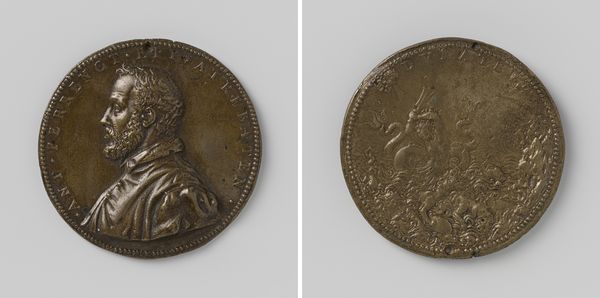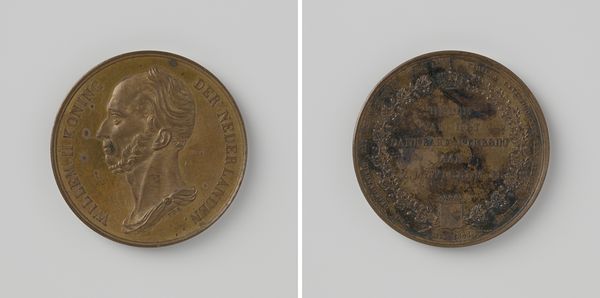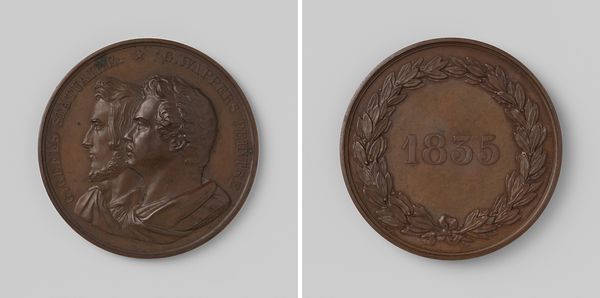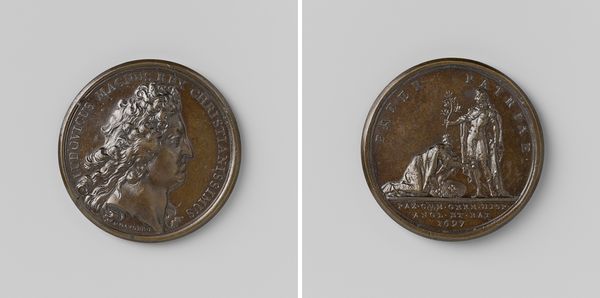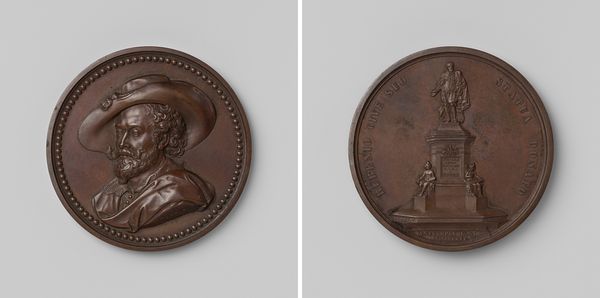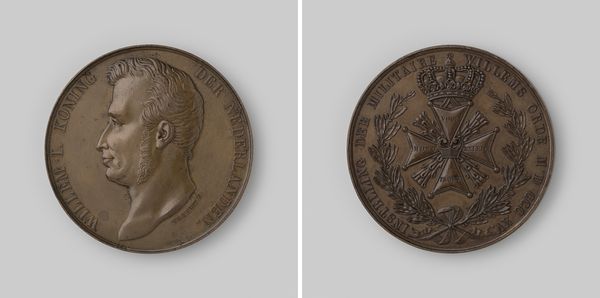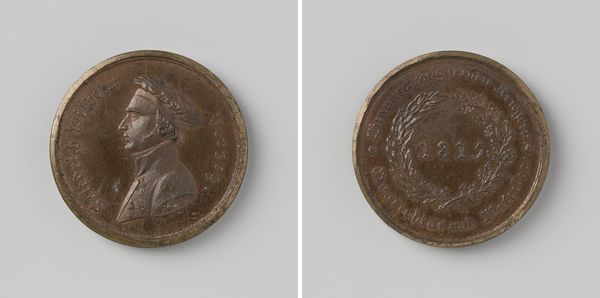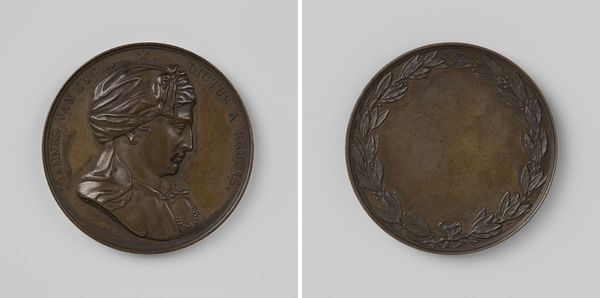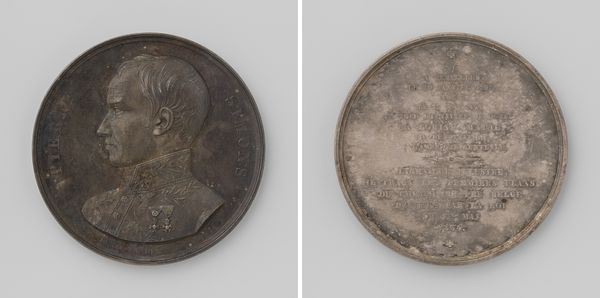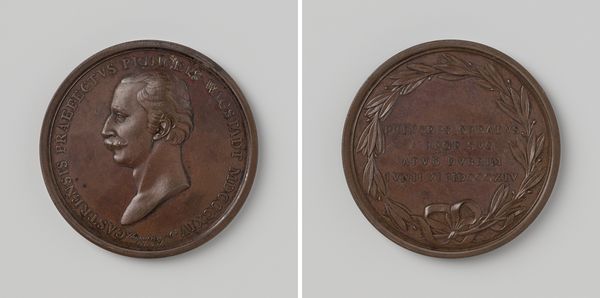
metal, bronze, sculpture
#
portrait
#
neoclacissism
#
metal
#
sculpture
#
bronze
#
sculpture
#
history-painting
Dimensions: diameter 4.1 cm, weight 34.80 gr
Copyright: Rijks Museum: Open Domain
Editor: This is a bronze sculpture from between 1829 and 1849 by Johannes Petrus Schouberg titled "Frederik, prins der Nederrelanden," which I believe translates to "Frederick, Prince of the Netherlands." I'm immediately struck by how it's both a portrait and a historical artifact. What can you tell me about its broader cultural and historical importance? Curator: It's intriguing to view this bronze piece, as more than just an individual portrait. It’s an object imbued with political intent, circulated among elites, and acting as a token of allegiance during the rise of the Netherlands nation-state in the 19th century. Consider its purpose beyond mere commemoration; who was meant to view it, and what social connections did its possession signify? Editor: So, it’s like a form of propaganda almost? Who was Frederik and why make a bronze casting about him? Curator: Precisely. Think about the moment in history. After the Napoleonic era, there's a strong push to define national identities, and the image of Prince Frederik serves that purpose. Commissioning and distributing this sculpture helps consolidate power. What do you notice about the style that tells us something about that moment? Editor: The crispness of the profile, the lettering, it feels very neoclassical in its desire to connect to earlier empires. Is this type of item typical of the time period, in the way rulers or politicians presented themselves? Curator: Good observation. The neoclassical style harkens back to Roman ideals, linking the Prince to notions of stability and empire. Producing multiples also ensured broader reach and solidified the family's authority. Did examples such as this serve to disseminate carefully-constructed persona to shape public opinion? Editor: I see now that it’s not just art, but a form of communication carefully controlled by the elite. I had not considered bronze a means of mass-producing portraiture before, so that context really does bring out an additional layer of political meaning in the sculpture! Curator: Precisely. And considering such objects from both an artistic and a political point-of-view allows one to explore the ways rulers manipulated art.
Comments
No comments
Be the first to comment and join the conversation on the ultimate creative platform.
